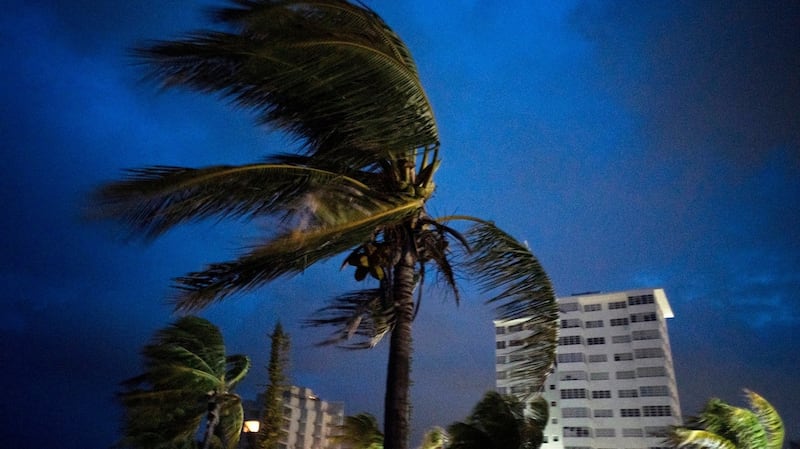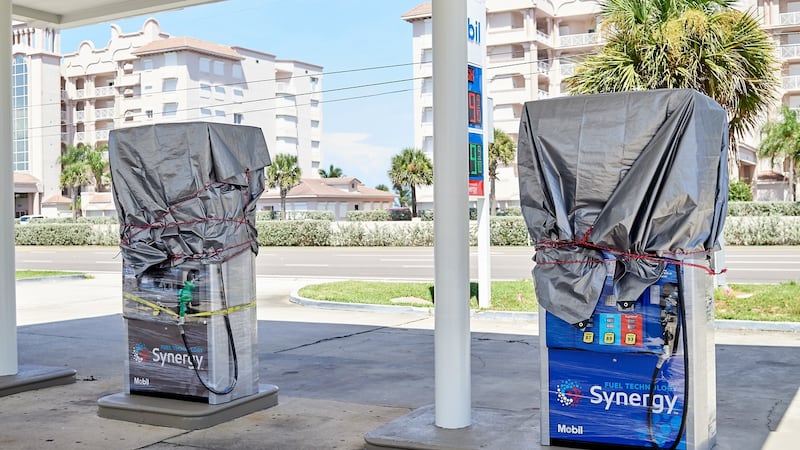Hurricane Dorian pounded the Bahamas on Monday, peeling off roofs, snapping power lines and inundating homes with floodwater while creeping toward the US coast, where more than a million people were ordered evacuated.
The Bahamas Press reported on Twitter that a boy had drowned in the northern Bahamas, the first recorded fatality of one of the most powerful Atlantic hurricanes on record. There were no other confirmed reports of deaths or casualties.
As many as 13,000 homes in the Bahamas may have been destroyed or severely damaged, the International Federation of Red Cross and Red Crescent Societies said.
Houses in a neighbourhood in Freeport on Grand Bahama Island were engulfed by 1.8m of water. “It looks like they’re boats on top of the water,” said Rosa Knowles-Bain (61) a resident who fled two days ago to an emergency shelter.

A Reuters witness staying in the hotel at the Abaco Beach Resort on the island of Great Abaco said winds had torn off the shutters and part of the roof, and the site was surrounded by a lake of water.
The hurricane, which was downgraded late Monday morning to Category 4 on the five-step Saffir-Simpson Wind Scale, was last over Grand Bahama, packing maximum sustained winds of 240kp/h, the Miami-based National Hurricane Center (NHC) said in an update at 6pm Irish time.
Dorian is expected to remain over Grand Bahama for much of the day and night with “catastrophic” winds and a massive storm surge that could raise water levels by as much as 5 to 7m above normal in some areas, the NHC said.
Although Dorian is expected to weaken gradually, forecasters said it likely would remain a powerful hurricane for the next couple of days.
‘Get out now’
Strong gusts and high surf were already being reported along Florida’s east coast as the hurricane was about 168km from West Palm Beach, the centre said, adding that Dorian would come dangerously close to the state Monday night through Wednesday evening.
Nine counties in Florida have issued mandatory evacuations. These included for parts of Duval County, home to Jacksonville, one of Florida's two biggest cities, and some areas in Palm Beach County, home to President Donald Trump's Mar-a-Lago resort.
Florida governor Ron DeSantis urged coastal residents to heed evacuation orders. “Get out now while there’s time and while you have fuel available,” he said in a news conference from the state’s emergency operations center in Tallahassee.

Among those being evacuated was Sue Watson, a 93-year-old resident of a retirement community in Kissimmee in central Florida.
“I was all set to stay home until they had to turn the water off,” said Ms Watson, who added that she was not worried for her personal safety but hoped the storm spared the retirement community.
Transport chaos
The storm was causing havoc for travellers on Florida’s east coast, where some airports and gas stations were closed.
Delta Air Lines said it cancelled 55 flights scheduled for Monday and Tuesday after airports in Fort Lauderdale, West Palm Beach, Melbourne and Daytona Beach closed.
American Airlines said airport operations had been suspended at seven airports in Florida and the Bahamas, and a travel alert issued for more than 20 airports including in Georgia, North Carolina and South Carolina.
South Carolina Governor Henry McMaster ordered mandatory evacuations for parts of eight coastal counties in his state effective at noon on Monday. More than 830,000 people were under evacuation orders in Charleston and other coastal communities in South Carolina, emergency management officials announced.
Georgia Governor Brian Kemp ordered evacuations in six coastal counties, including all of Savannah’s 150,000 residents, also effective at noon on Monday, Kemp’s office said on Twitter.

Dorian was tied with Gilbert (1988), Wilma (2005) and the 1935 Labor Day hurricane for the second-strongest Atlantic hurricane on record, based on maximum sustained winds. Allen in 1980 was the most powerful, with 305kp/h winds, the NHC said.
Scientists have warned that climate change is making hurricanes more intense. As global warming heats up the ocean surface temperature, storms gather more energy, which can lead to greater rainfall and stronger winds as they make landfall.
“When scientists put the pieces together, they project that in general, hurricanes will become more intense in a warming world . . . much like we’ve seen recently with Hurricanes Harvey, Michael and Florence,” the Union of Concerned Scientists, a nonprofit science advocacy group, said in a blog post about Hurricane Dorian. – Reuters







